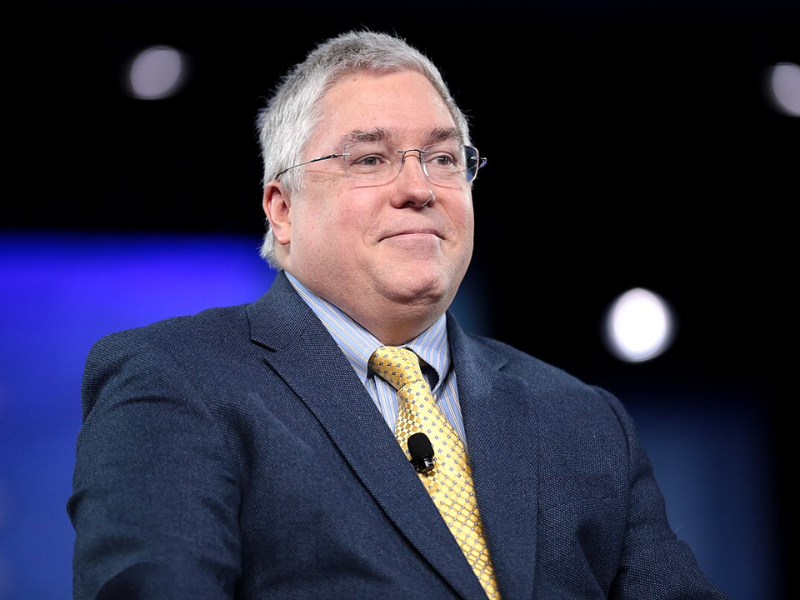
Democrats have made gains in gubernatorial contests, especially in the past two years, and are now nearly even with Republicans in parity across the country, with 26 GOP governors to 24 Democratic ones.
There are just 11 governors' races on the ballot come November. Most incumbents look like they are in a strong position for reelection. Even Republicans sitting in very blue states look poised to win another term after showing strong leadership during the coronavirus pandemic, especially in contrast to the federal government's failures.
Of the governors races up in the 2020 cycle, seven are GOP-held states while four are in Democratic-held states. Still, only a handful are competitive, meaning the partisan breakdown is unlikely to shift that much come November. We currently project anywhere between a gain of one state for Republicans to a gain of one state for Democrats. No net change is possible as well.
We are making two ratings changes today:
- Missouri: Likely to Lean Republican
- Vermont: Likely to Solid Republican
The only true Toss Up is in the Montana open-seat contest, and this represents Republicans' best — and perhaps only — shot at flipping a governor's mansion. Polling shows GOP Rep. Greg Gianforte and Democratic Lt. Gov. Mike Cooney in a close race that will probably stay knotted up to Election Day, with Gianforte hitting Cooney for his decades in politics while Cooney is slamming Gianforte's business record.
In North Carolina, Democratic Gov. Roy Cooper remains the favorite for reelection with a hefty fundraising advantage — and steady polling lead — over Republican Lt. Gov. Dan Forest. Forest has come under fire for remarks he's made disparaging the efficacy of mask-wearing that Democrats have exploited. The closeness of the Tar Heel State as the ultimate swing state this election means this one may never be comfortably put away for Cooper. Still, he is running the best of any statewide Democrat on the ballot, and it remains in the Lean Democratic column.
Vermont and New Hampshire are the only two states that give their governors two-year terms, and both look very likely to re-elect their Republican governors despite being blue at the federal level. In Vermont especially, Gov. Phil Scott has managed to build a coalition across party lines and is now the heavy favorite to win a third term over Democratic Lt. Gov. David Zuckerman.
An early August VPR-Vermont PBS poll found that 83% approve of how Scott has handled the state's response to COVID, while two-thirds approve of his handling of race relations. Scott has bucked his party on many instances, including issuing a statewide mask mandate and has said he won't vote for President Trump and is open to voting for Joe Biden. As such, early Democratic hopes to make this a competitive race have all but disappeared, and we are moving the Vermont race from Likely to Solid Republican.
New Hampshire is trending in that same direction, but we are leaving GOP Gov. Chris Sununu in the Likely Republican column for now given that the primary was just last Tuesday, setting up a race with state Senate Majority Leader Dan Feltes. The newly-minted Democratic nominee doesn't have much time to gain momentum though, with a University of New Hampshire poll conducted just before the primary (Aug. 28-Sept. 1) found Sununu with a 24 point lead over Feltes. Another worrisome sign for Feltes is that Sununu also got 4,276 write-in votes in the Democratic primary or about 3% of all the primary votes.
The only race that has shown significant movement in the past few months is in Missouri, where Republican Gov. Mike Parson is seeking a full term in his own right after being elevated to the office in 2018. Parson faces a strong challenge from state Auditor Nicole Galloway, the only remaining statewide Democratic elected official in Missouri. Several factors, including increased spending from both national Republican and Democratic groups, along with strong fundraising from Galloway, competitive internal polling, newly up-for-grabs suburban areas and miscues on COVID from Parson make this a more competitive race, and we are moving Missouri from Likely to Lean Republican.
Galloway, a CPA and former Boone County Treasurer won her race two years ago by almost six points at the same time that Sen. Claire McCaskill lost her reelection bid by about that same margin. Galloway is a math wonk and talks about fighting public corruption and saving taxpayer dollars, and that's a more nonpartisan message that could resonate with voters. There hasn't been high quality, reliable public polling in the race, but Republicans say they feel comfortable with Parson's standing while Democratic polling shows an increasingly tightening race.
The money pouring into this race reflects its growing competitiveness. The RGA helps fund the Uniting Missouri PAC, which is bolstering Parson, and through Election Day so far, they've already reserved $12 million in ads, with $6.3 million already spent. Their ads have worked to paint Galloway as "soft on crime" and argues her campaign is being bankrolled by those supporting defunding the police, even though Galloway herself doesn't hold that position. The "law and order" message is one they hope has particular resonance here given that Parson served for 12 years as the Sheriff of Polk County. Other ads superimpose Galloway's image with Nancy Pelosi, Bernie Sanders and Elizabeth Warren. The DGA, via the A Stronger Missouri PAC, have reserved at least $5 million through Election Day and has already spent $2.3 million, while Galloway herself has reserved over $2.9 million.
Parson doesn't have many of the traditional benefits an incumbent may have since he wasn't elected to the top job himself, and Democrats are honing in on his long career in the legislature, with their latest ad claiming he treated his job as the "show me the money state" for taking money from lobbyists. The message that could have the most resonance is his actions on COVID, and he created controversy earlier this summer when he said that even if kids contract the virus when going back to school, "they're going to get over it." And as the New York Times pointed out, cases in the state "are higher and staying high."
Galloway's best shot is to run up the score in the urban and suburban areas, and she'll be helped by a competitive House race in the 2nd District, where GOP Rep. Ann Wagner is in a Toss Up race against Democrat Jill Schupp in the St. Louis suburbs. Galloway is from Columbia, so her base being in another populous area with a high density of college and college-educated voters bodes well for her too, and she hopes to run at least competitively in the rural areas. However, that's where Parson retains an advantage though, and the state's fundamentals still favor a Republican in a presidential year, albeit even though no one expects Trump to take the 18.5 point win he got four years ago. Governors races are, of course, better opportunities for cross-over voters than federal Senate races, so this one increasingly merits watching.











Subscribe Today
Our subscribers have first access to individual race pages for each House, Senate and Governors race, which will include race ratings (each race is rated on a seven-point scale) and a narrative analysis pertaining to that race.